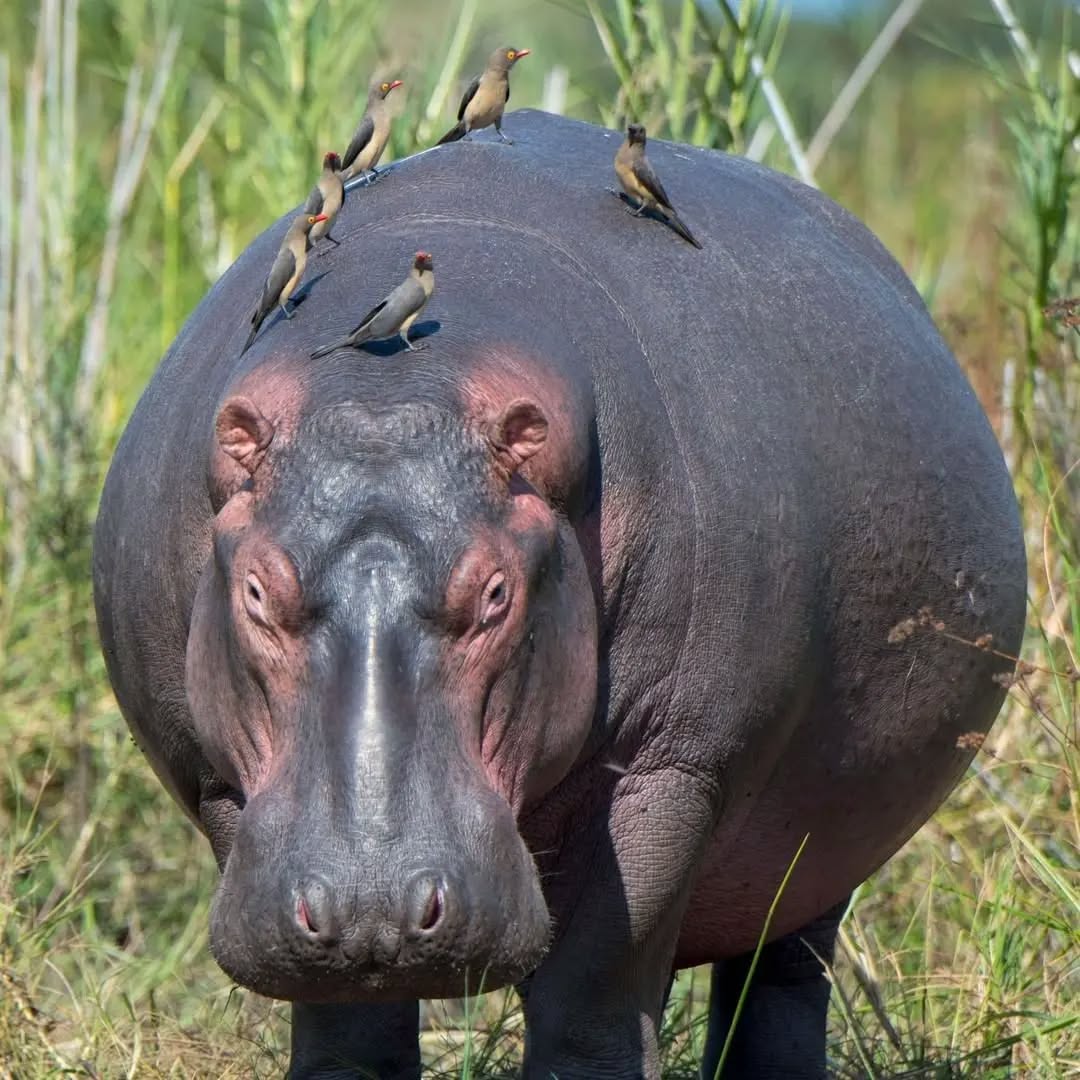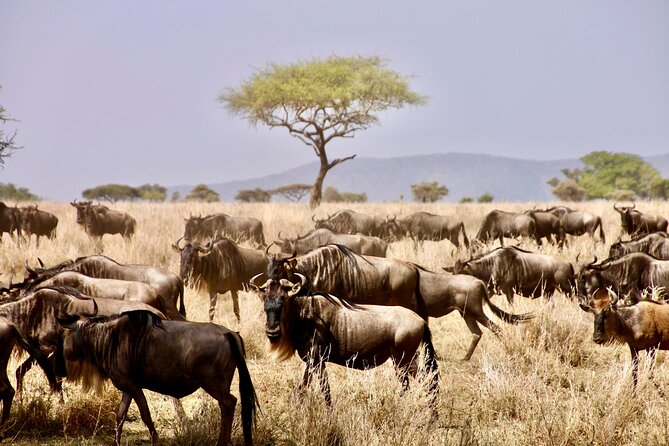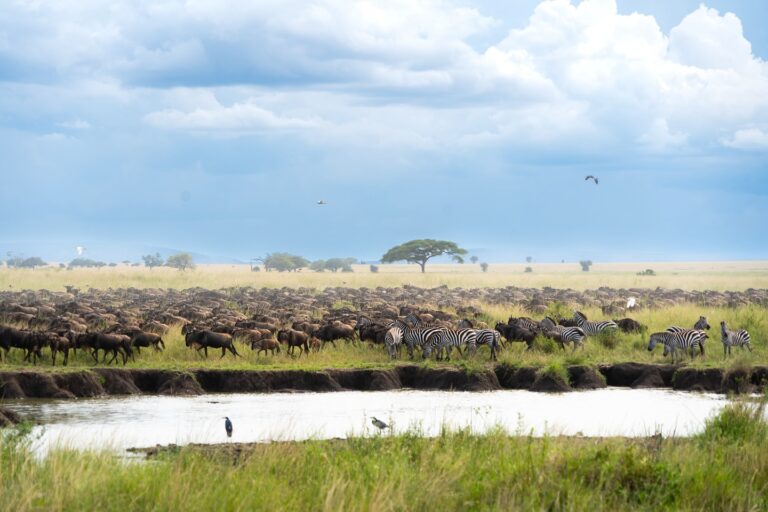Think Hippos Are Just Chubby Swimmers? These 5 Facts Might Surprise You!
Hippos of the Wild: Africa’s Underwater Giants Revealed.
At first glance, Hippos of the wild may appear docile, languidly lounging in sun-dappled pools, but don’t be fooled. This colossal creature is one of Africa’s most formidable animals. Weighing up to 7,000 pounds and stretching as long as a giraffe is tall, the hippo is the third-largest land mammal on Earth, after elephants and rhinos.
Despite their gentle-looking, barrel-shaped build, hippos are fiercely territorial and surprisingly agile. From their ancient lineage to their vital role in aquatic ecosystems, these amphibious giants are full of surprises. At Afrima Luxury Travel, we invite you to experience the wild majesty of hippos up close during your bespoke Tanzanian safari.
Meet the “River Horse”
The name hippopotamus comes from the Greek for “river horse.” Yet this name belies their true nature, hippos are not horses at all, but distant aquatic cousins of whales and dolphins, sharing an evolutionary ancestor over 50 million years ago. They’ve evolved into extraordinary semi-aquatic mammals that dominate Africa’s waterways.
Quick Profile of the Hippopotamus
Scientific Name: Hippopotamus amphibius.
Lifespan: 40–50 years in the wild.
Size: Up to 11 feet long and 5 feet tall.
Weight: 3,000–7,000 lbs
Range: Sub-Saharan Africa; densest populations in Tanzania—especially in Katavi and Serengeti National Parks.
Population Estimate: 125,000–150,000 globally, with 20,000–30,000 in Tanzania alone.
Five Remarkable Hippo Facts You’ve Likely Never Heard
1:Hippos Don’t Swim—They Sink Gracefully
Although Hippos of the wild, spend most of their lives in water, they’re not swimmers in the traditional sense. Instead of floating or paddling, they walk or glide along riverbeds, aided by their dense bones. Their nostrils, eyes, and ears are positioned high on their heads, allowing them to breathe and stay alert while mostly submerged. They can hold their breath underwater for up to five minutes, a true riverbed marvel.
2:Hippos Are Whales’ Long-Lost Cousins
Forget the pig comparison. The closest relatives of hippos are whales and dolphins. According to leading evolutionary biology research, hippos and cetaceans share a common ancestor and diverged from each other around 55 million years ago. This ancient connection explains their remarkable aquatic adaptations.
3:Baby Hippos Are Born Underwater—and Can Weigh 100 Pounds
Few creatures are as endearing as a baby hippo. Born underwater, these precocious calves must immediately learn to surface and breathe. Mothers are fiercely protective, even nursing underwater. Despite their size, baby hippos are playful, curious, and form tight bonds with their herd, an unforgettable sight on a Tanzania safari.
4:Pablo Escobar’s Pet Hippos Are Now a Wild Population
In a bizarre twist of history, Colombian drug lord Pablo Escobar imported a group of hippos to his private zoo. After his death, the animals escaped and began multiplying. Today, over 50 feral hippos roam Colombian waterways, forming the largest hippo population outside Africa, an unintended legacy that’s become an ecological challenge.
5:Hippo Dung Feeds Africa’s Rivers—Literally
Each night, hippos consume up to 100 pounds of grass. By day, their waste fertilizes aquatic ecosystems, enriching the food chain for fish, insects, and birds. Fascinatingly, male hippos also use dung in a rather unromantic mating ritual, flicking it with their tails to mark territory and attract mates.
Hippo Behavior, Communication & Social Life
Hippos live in tightly knit groups known as pods or bloats, typically led by a dominant male who defends his territory against rivals. They communicate through deep grunts, bellows, and body language like ear flicks and yawns, often heard echoing across riverbanks in Tanzania.
Though they spend their days submerged to avoid the heat, hippos are nocturnal grazers, emerging under cover of darkness to feed. Females form strong maternal bonds and nurture their calves for over a year.
Where to Spot Hippos in Tanzania?
Tanzania offers some of the world’s best hippo viewing. These locations are particularly rewarding:
Katavi National Park – Home to Africa’s highest hippo density
Serengeti National Park – Watch hippos jostle in the Grumeti River
Ruaha & Nyerere National Parks Exceptional for wildlife photography
With Afrima Luxury Travel, you’ll explore these regions in the utmost comfort, guided by expert naturalists who know precisely where and when to find the action.
Did You Know?
Hippos can run up to 30 km/h (18.6 mph) on land despite their size.
They mark territory with spinning dung sprays, a bizarre, yet effective method.
They’re classified as Vulnerable due to habitat loss and human conflict.
Experience the Majesty of Hippos with Afrima Luxury Travel
Imagine drifting past a pod of hippos as the sun rises over a misty river, their bellows echoing through the valley. This is the kind of memory you’ll make with us. Our customized itineraries allow you to experience Tanzania’s aquatic wildlife up close, luxuriously, safely, and ethically.
Ready to Plan Your Luxury Safari?
Book your tailor-made adventure today. Whether it’s tracking the Big Five, floating above the Serengeti in a hot-air balloon, or watching hippos wallow under the stars, we’ll craft the perfect journey.
[Enquire Now] | [Browse Safari Experiences] | [Request Custom Quote]
Frequently Asked Questions About Hippos
1:Are hippos dangerous?
Yes, especially males and mothers with calves. They are highly territorial and known to charge if threatened.
2:Can hippos swim?
Not exactly. They walk or bounce along river bottoms using their powerful legs and lungs to stay buoyant.
3:Are they related to pigs?
No. Their closest relatives are whales and dolphins.
4:Do they eat meat?
No. Hippos are herbivores and graze on grass and aquatic plants.
5:How long do hippos live?
Typically 40–50 years in the wild; longer in captivity.
6:Do they live in groups?
Yes, in pods of 10–20 individuals, led by a dominant male.
7:Where can I see hippos in Tanzania?
Katavi, Serengeti, and Nyerere National Parks offer fantastic hippo sightings.
Discover Tanzania’s Wild Side with Afrima Luxury Travel
With decades of expertise and a commitment to authentic, sustainable travel, Afrima Luxury Travel is your gateway to unforgettable wildlife encounters. Let’s craft a journey that brings you face-to-face with the mighty hippopotamus and so much more.
Explore. Indulge. Experience Tanzania with Afrima.



